
How to Use Twine in Your Kitchen
Types of Twine
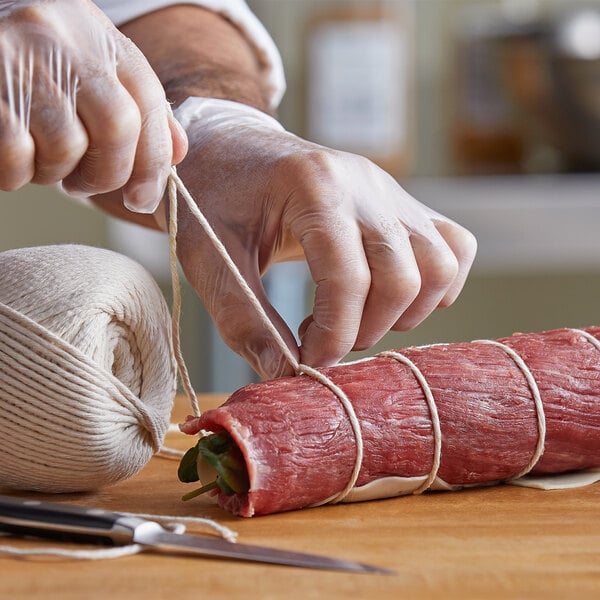
Butcher Twine (Cooking Twine, Kitchen Twine)
Butcher’s twine, also known as cooking twine and kitchen twine, is durable, low-stretch, oven-safe, and often made of cotton, polyester / cotton blend, or linen.
Uses: Butcher's twine is perfect for trussing poultry, tying roasts to ensure they keep their shape, securing stuffed meats, and tying off a bundle of herbs. Butcher’s twine can also be used to tie off sausage or for smoking, drying, or curing meats.
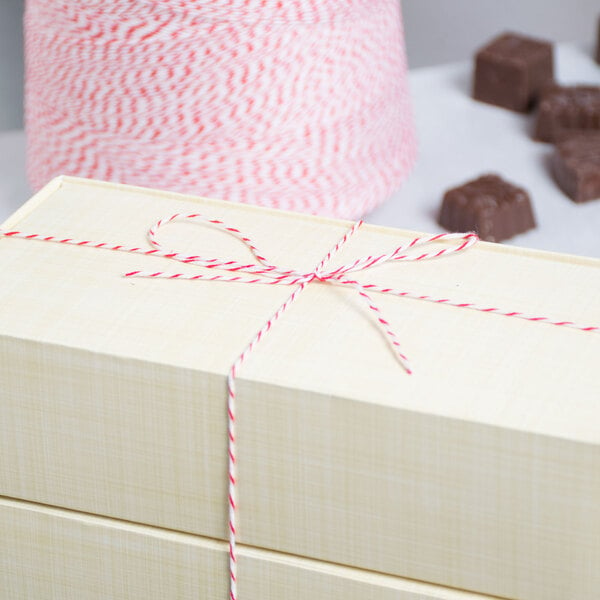
Typically made of cotton or a polyester / cotton blend, this twine is food-safe but not intended for cooking. It is a durable twine with some stretch that often comes in different colors or striped.
Uses: The durability and visual appeal of baker’s twine make it perfect for tying off bags of cookies or candy, securing a cake box, or to add a decorative touch to your plating.
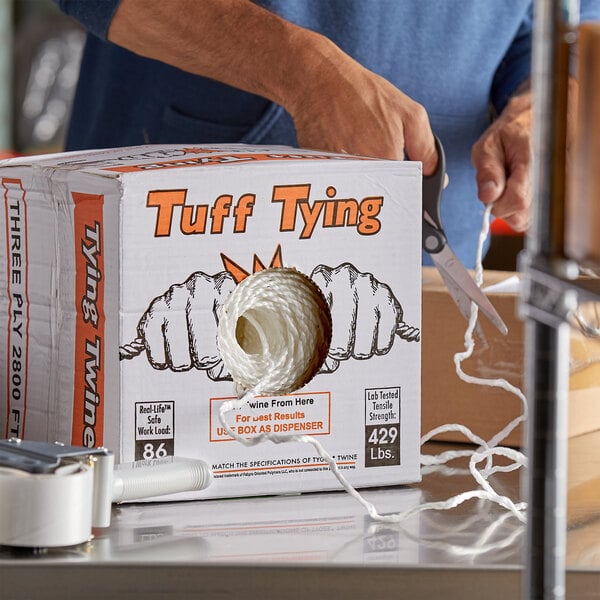
Often made of polypropylene, this twine has minimal stretch and is not recommended for use with food. This twine is highly durable and its waterproof design resists rotting and mildew.
Uses: This twine is great for general and industrial uses. Its durability makes it ideal for securing items in your distribution center, food truck, or retail shop. Use it to keep your storage areas organized by keeping newspapers, cardboard, bins, and crates bundled together.
What is Twine Made Of?

Cotton is one of the more affordable, versatile materials for twine. It’s food-safe, oven-safe, and strong, making it ideal for cooking or crafting. Plus, cotton is a renewable resource so it's one of the more environmentally-friendly twines.
Uses: Cotton twine is best used as butcher twine since it’s oven-safe; however, its durability makes it an excellent twine for securing boxes or keeping food items bundled together.
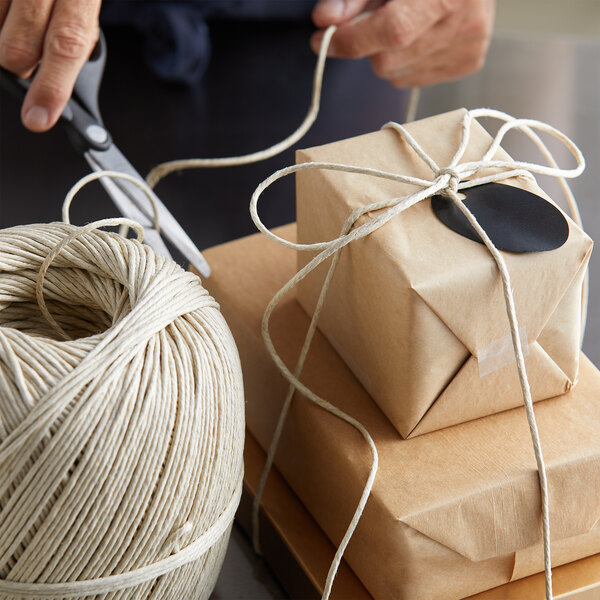
Made of 100% hemp, this twine is environmentally friendly and usually compostable. Perfect for securing or tying, this low-stretch, durable twine is food-safe but should not be used with heat or put into the oven.
Uses: This sturdy twine is ideal for securing shipping packages, inventory, and homemade or homegrown goods at farmers' markets without worry. This twine can also be used similarly to baker’s twine to add a natural decorative touch to your food items.
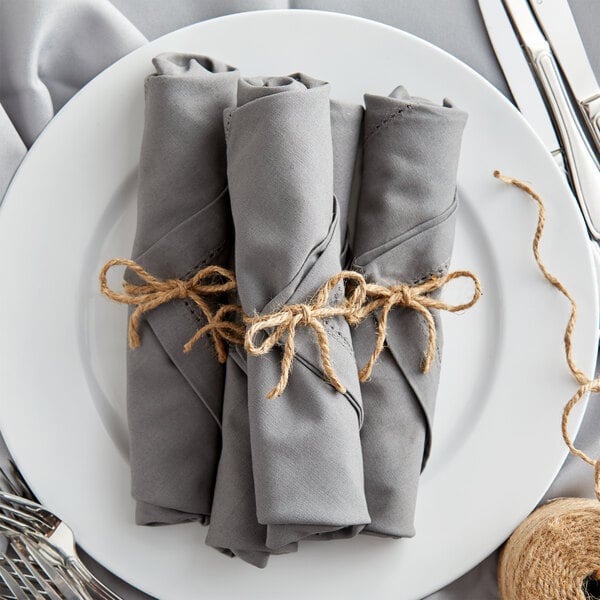
An affordable twine made of 100% jute, this twine is also environmentally friendly and usually compostable. Jute twine is a food-safe, durable product with low-stretch and is not recommended for use with heat or in an oven.
Uses: Jute twine is perfect for adding a rustic, natural decoration to your food display. It’s great for securing packaging and even for hanging herbs. Use jute twine in your garden to gently hold up plants or to hold picked vegetables in bundles.
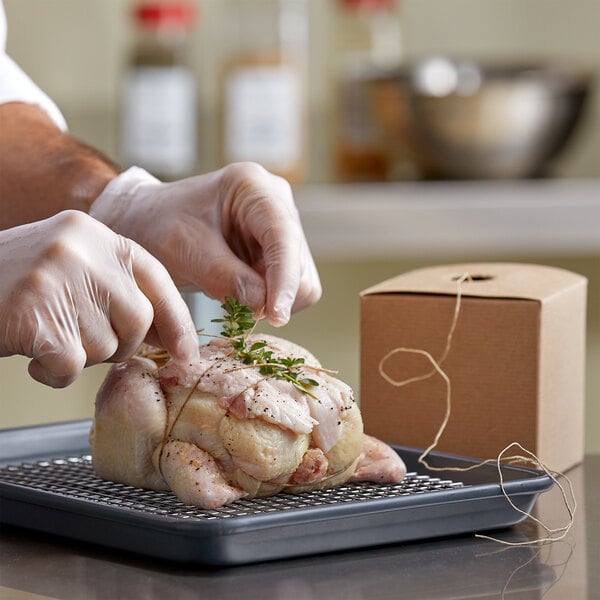
Linen, a material made from flax plants, dries faster than most natural materials, giving it antibacterial properties. Linen is durable, oven-safe, food-safe, and low-stretch, and out of all the natural twine materials, linen is one of the strongest and holds knots the best.
Uses: Linen twine is perfect for hanging meats for smoking purposes or for tying roasts and stuffed meats. Due to its strength and antibacterial properties, this twine is also is the ideal natural twine for use in shipping facilities, storage areas, and warehouses.
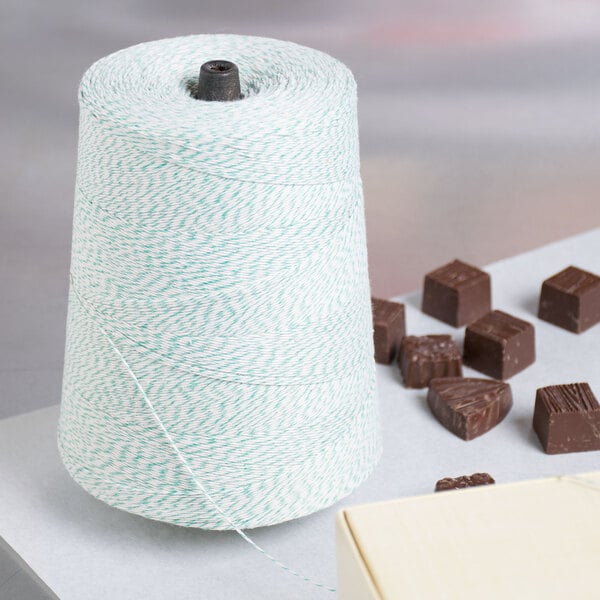
Polyester / cotton blends can vary greatly and depending on their thickness they can have different properties. Thicker twines made of this blend are durable with some stretch, while thinner, colored versions of this blend tend to have a greater stretch and are more suited for decoration or crafting purposes.
Uses: When this blend is used to create a thinner, colored twine it's ideal for adding a pop of color as a bakers twine and it can be used to spruce up packaged goods or for adding an eye-catching element to your table setting. As a plain, thicker twine it can work well as a butcher twine.
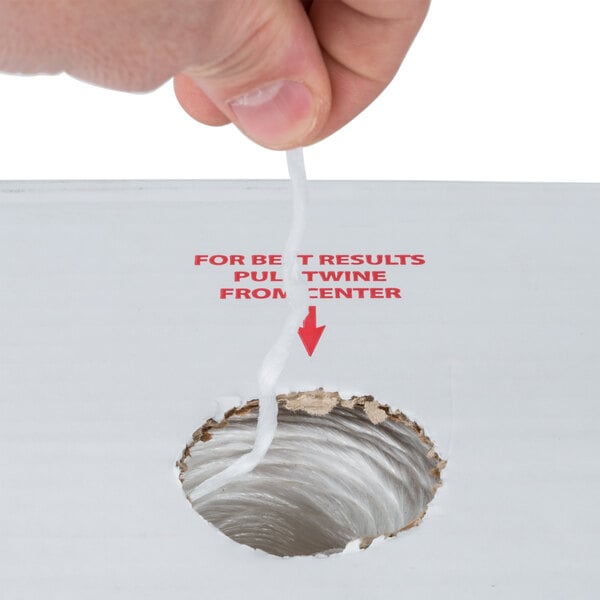
Polypropylene is extremely durable and has little stretch. It resists rot, mildew, and moisture damage, making it the longest-lasting twine material; however, it is not food safe and is best suited for industrial tasks.
Uses: Twine made of polypropylene is perfect for securing inventory, cargo, and storage containers. Use polypropylene twine in damp, dark areas since it resists moisture damage and rot or use it with heavy items since it's durable and low-stretch.
Synthetic Twine vs. Natural Twine
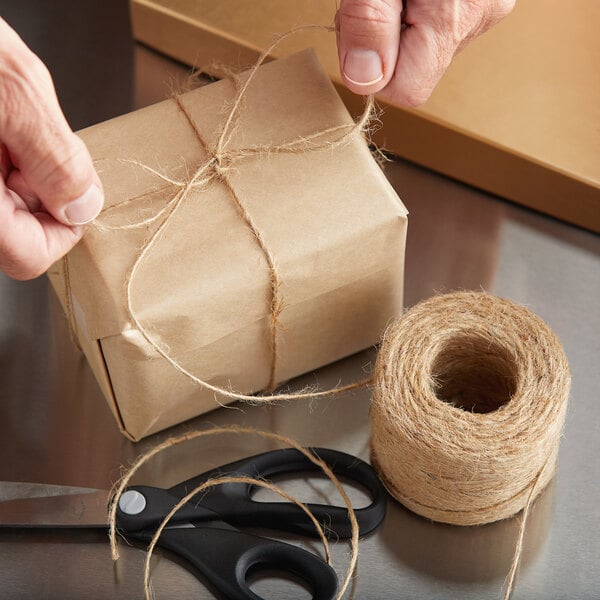
Natural Twine
- Environmentally friendly
- Food-safe
- Some materials are oven-safe
- Will not affect flavor of food
- Not all natural twines are oven-safe
- Some natural twines may drop fibers during use
- Not water or oil resistant
- Less durable than synthetic twine

Synthetic Twine
- Strong and durable
- Affordable
- Resistant to oil and water
- Resistant to abrasion
- Some materials are not for use with food
- Not oven-safe
- Not environmentally friendly
What Affects Twine Strength?
The ply, weight, and size of a twine can greatly affect its tensile strength. Tensile strength is the amount of tension an item can withstand before breaking and it's measured in mPa (megapascal pressure unit). Look for the ply, weight, size, and tensile strength of a twine to help you identify its strength.Ply: Ply refers to the amount of strands or plies that are twisted or braided together to form one single strand. For most kitchen twines, the plies are twisted together. The more plies within the twine, the stronger it will be.
Weight: Twine's weight can help determine its strength. It can be light, medium, and heavy, with heavy being the strongest.
Size: A twine's size can be determined most accurately by its diameter in millimeters or inches; the larger the diameter, the stronger the twine. However, sometimes size is identified by gauge. The gauge is a number that corresponds with a certain diameter and it is preceded by the # symbol. The larger the number, the larger the diameter of the twine. Different manufactures can use different diameter correspondents to a gauge so it's important to double check the twine's diameter in millimeters or inches if that information is given.
Related Resources

How to Cure Meat
With the recent increased popularity of charcuterie boards, there come new opportunities to provide your guests with a sophisticated assortment of flavors and textures. By curing your own meats, you can earn the most profits for your business, especially since many charcuterie items include inexpensive cuts of meat. The practice of curing meat also falls nicely into the "nose to tail" trend of using every part of the animal, because some of the commonly cured cuts would ordinarily be discarded. Keep reading to learn more about meat curing methods and important laws and regulations so you can offer the latest charcuterie trends . Shop All Charcuterie & Cured Meats What Is Cured Meat? Cured meat refers to any meat that's been preserved th
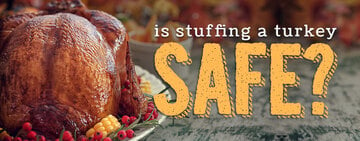
Stuffing a Turkey: Is It Safe?
There are numerous factors to consider when preparing your Thanksgiving turkey, from safe stuffing practices to proper carving techniques . Cooking stuffing inside a roasted turkey is a long-standing tradition at many Thanksgiving feasts. However, it's essential to be aware that this practice can pose a cross-contamination risk if the stuffing is not cooked properly. We'll go over how to correctly and safely cook stuffing inside your turkey by maintaining the correct temperature control. Is It Safe to Cook Stuffing Inside of the Turkey? Although cooking stuffing in a baking dish is the most straightforward method to achieve thorough cooking, it is possible to safely cook stuffing inside the turkey by following the appropriate steps. For tho

What Is Butcher Paper?
Butcher paper is a special paper product designed for wrapping raw meats and fish to protect against airborne contaminants and flavor contamination. Also useful for cooking and preparing meat and packaging sandwiches and subs, butcher paper is available in a variety of colors and sizes to suit the unique needs of any business. Whether you're starting a butcher shop , overseeing a deli, or selling your homemade sausages at a farmer's market, butcher paper is an essential tool for your business. Read on to learn about the different styles and features of butcher paper and its best applications. Shop All Butcher Paper Types of Butcher Paper 1. White Butcher Paper White butcher paper is uncoated, FDA approved, and perfect for efficiently wrappi
- Topics 1346
- Industrial 55
- Troubleshooting Guides 21
- Restaurant Management 128
- Bar Management 55
- Catering Tips 35
- Bakery Management 42
- Food Trucks & Concessions 49
- Advertising & Marketing 37
- Eco-Friendly Tips 11
- Facility Layout & Design 41
- Coffee Shop Tips 28
- Installation & Maintenance 51
- Janitorial & Pest Control 30
- Safety & Sanitation 88
- Startup Tips 104
- Menu Design 10
- Kitchen & Cooking Tips 81
- Hospitality Management 23
- Pizza & Sandwich Shop Tips 36
- Smallwares 37
- Food Prep 88
- Tabletop Items 17
- Disposables 22
- Calculators & Tools 6
- Consumables 52
- Warewashing & Laundry 18
- Cooking Equipment 90
- Food Storage & Refrigeration 51
- Beverage Equipment 34
- Office Supplies 6
- Resource Type
- In-Depth Articles272
- Buying Guides296
- How-Tos93
- Product Reviews77


